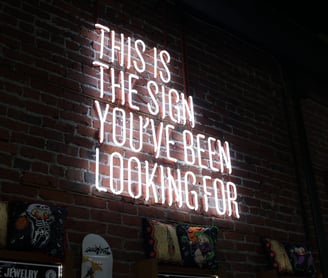The Role of Psychology in UX Design: Getting into Users’ Heads… Without Making Them Feel Crazy!
As a UX designer, you have to be part psychologist, part magician, and all-around mind reader. After all, your job is to design a product that people will love to use and keep coming back to.
Amber
3/3/20233 min read


As a UX designer, you have to be part psychologist, part magician, and all-around mind reader. After all, your job is to design a product that people will love to use and keep coming back to. And to do that, you need to understand how their brains work. But don’t worry, you don’t need a PhD in psychology (or a crystal ball) to get the job done. Here are some ways to use psychology in your UX design:
Cognitive Overload? No, Thanks!
Do you like carrying a heavy backpack all day long? Neither do users who are bogged down with too much information on a screen. So, keep it light and airy by simplifying navigation, using clear language, and organizing information logically. Your users’ shoulders (and brains) will thank you!
Mental Models: It’s Not Just for Runway Shows
When it comes to UX design, understanding your user’s mental models is like walking in their shoes…but without the blisters. Design your interfaces in a way that matches their expectations, and they’ll feel right at home. For instance, if they’re used to clicking on a “shopping cart” icon to access their cart, don’t make them hunt for it like a lost treasure.
Affordances: It’s All About the Perception
It’s like that old saying: “Don’t judge a book by its cover.” But when it comes to UX design, users are going to do just that. So, make sure your buttons and other interface elements suggest their function clearly. No guessing games here! Users should feel confident that they know how to interact with your design.
Feedback: The DJ of UX Design
Who doesn’t love a good beat drop or a well-timed sound effect? Feedback is the DJ of UX design — it keeps the party going by letting users know what’s going on. Use visual cues, sounds, or animations to give users feedback on their actions. It’ll help them feel more in control and keep them coming back for more.
Emotions: The Secret Sauce of UX Design
Happy users mean successful products. So, design interfaces that evoke positive emotions and minimize negative ones. Whether it’s through visual design, tone of voice, or the overall user experience, focus on creating positive vibes that keep your users feeling good.
Social Proof: The Online Party Trick
We all know that person who can start a dance party just by walking into a room. Social proof is that same kind of magic — it encourages users to take action when they see others doing the same thing. Use social proof to encourage users to share a product on social media or leave a review. Show them how many people have already taken the plunge, and watch them follow suit!
Heuristics: The Mind Reader
You don’t need a crystal ball to know what your users are thinking. Heuristics are mental shortcuts people use to make decisions quickly. So, use familiar icons and terminology to make it easier for users to navigate your interface. It’s like reading their minds…but without the weirdness factor.
Persuasion: The Art of the Jedi Mind Trick
Use the Force, Luke…er, we mean, persuasion! Design interfaces that encourage users to take a certain action, such as making a purchase or signing up for a newsletter. Use persuasive language, visual cues, and incentives to nudge users in the right direction. It’s like the Jedi mind trick, but for UX design.
User Testing: The Scientific Method
User testing is like a science experiment — it helps you observe and gather feedback from real users. By watching users interact with your design, you can get valuable insights into what’s working and what’s not. Use these insights to make data-driven decisions and improve the overall user experience. Plus, it’s always fun to watch people try to figure out your design like a puzzle.
Gamification: The Game-Changer
Who says work can’t be fun? Gamification is the art of adding game-like elements to a product or experience to make it more engaging. Add rewards, challenges, and leaderboards to your design to create a sense of competition and accomplishment. Your users will feel like they’re playing a game, even if they’re just completing a task.
UX design doesn’t have to be all business and no fun. By leveraging the power of psychology, you can create products that are both functional and delightful to use. By understanding how users think, feel, and behave, you can build interfaces that are intuitive, engaging, and even a little bit magical. So, go and get into your users’ heads, without making them feel like they need therapy!
Why not check out this article on Medium
And, if you like it, hit the follow button while you're there to keep up to date with my writing.


CONTACT
+44 0203 818 0987
contact@amberdesign.online
